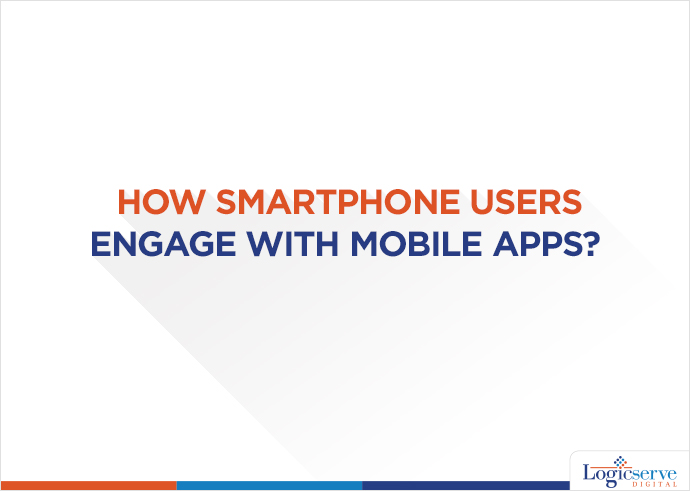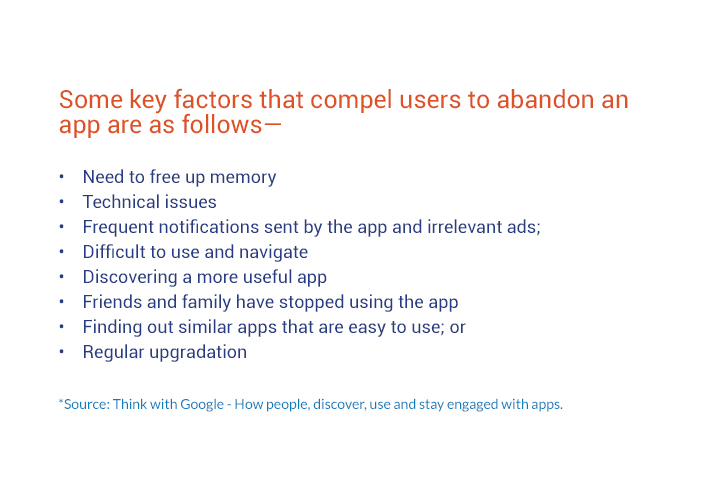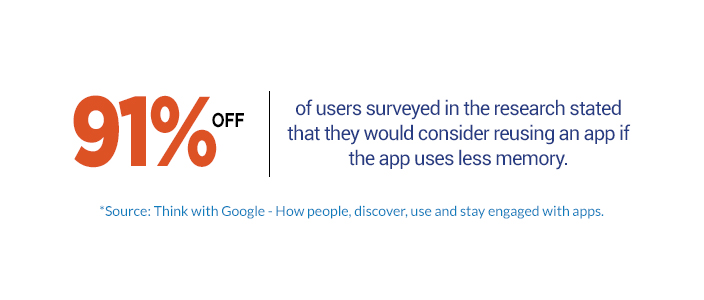A survey recently conducted by Google and Ipsos reveals how smartphone users discover, use and engage with apps. Our last post emphasised on the crucial factors that drive smartphone users to discover and use mobile apps. In this post, we will be analysing how mobile app developers keep people engaged with apps.
People install mobile apps to make their life easier. Moreover, if an app helps serve a specific purpose, people are more likely to use them repeatedly. According to the survey, providing users with a wide array of interesting features and personalisation options are two crucial factors that keep users engaged and help build app preference.
The Role of Value and Convenience in Keeping Users Attracted to an App:
The most challenging issue is that apps can be immediately abandoned by users after making a transaction or finding the required information about a product or service. The survey revealed that 38% of users mostly download a mobile app when it is necessary to complete a purchase, post which they uninstall the app as their purpose has been served.
Thus, it becomes important for app developers to take measures to ensure that their apps are utilized by smartphone users not just once but over and over again. This can be done by adding value and utility to an app so as to avoid getting lost in the quagmire of apps available in the app stores.
Reengaging With the Brand:
App users need some motivation to re-engage with the abandoned apps. Since apps are quite useful during the purchase journey of consumers, app developers should take every possible measure to understand the consumers’ purchase journey.
There are several ways for app developers to win back their app users such as—adding new features to the app, offering attractive discounts, and less data consumption. Some other interesting findings from the survey are as follows:
• 36% of users said they would reuse the app if it was redesigned for easier use, whereas 32% users would prefer apps that use less mobile data; and
• 13% of users opined that they would reinstall apps if the apps offer discount coupons for their next purchase, whereas 17% of users are willing to use uninstalled apps again if the apps offer exclusive offers on products.
• Another 13% of users would reconsider using an app only if their family and friends start using it.
Mobile App Engagement Ads on Search Networks:
Such ads can go a long way in reminding users about the value of an unused app. They remind people to open your app again for making a purchase. For example, if you are planning to buy a leather jacket, you would search for “ladies leather jacket”, and since you already have a shopping app installed on your smartphone that you had used last year to buy a pair of summer jeans, the same app can reach out to you by displaying ads in search results on your smartphone or tablet so as to remind you of its existence and notify you about a discount on leather jackets.
Deep Links:
This is yet another way app developers can help users to discover what they are looking for. For example, by incorporating deep links to an ad, mobile app engagement ads can directly link you to the listings within the app for leather jackets for women.
Stand Out From the Crowd:
Last but not least, app developers should keep in mind that the market is teeming with countless apps. Therefore, to catch the attention of users, app developers need to design unique apps so that people get enticed to use them time and again.
By adhering to these guidelines, app developers can keep users engaged with their apps. The findings from the survey conducted by Google and Ipsos MediaCT will not only help app developers to come up with effective app marketing tactics but also to attract and retain customers.
What steps are you taking to differentiate your mobile app to keep your users engaged? Do share your ideas by commenting below.






